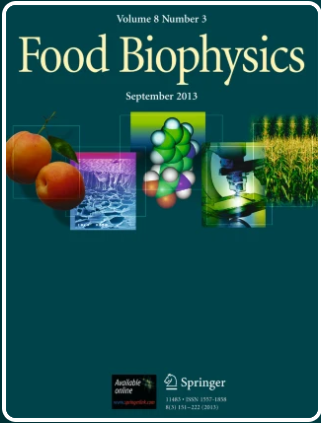In this study, the effect of ultrasonic treatment on sweet potato protein (SPP) was discussed. The structural and functional characteristics of SPP treated with different ultrasonic amplitudes (20–50%) were analyzed. The findings of the study suggested that the protein size and zeta potential decreased from 1711.00 nm and − 17.87 mV to 447.03 nm and − 42.52 mV (30% amplitude). Appropriate ultrasonic amplitude (30%) can significantly increase protein solubility (72.54%→79.89%) and free sulfhydryl group content (34.65→41.09 µmol/g). Surface hydrophobicity increased significantly by 34.71% at 40% amplitude. The structure of SPP was unfolded and intermolecular interactions were reduced by ultrasonic treatment, affecting the secondary structure and tertiary conformation of SPP, according to Fourier transform infrared spectroscopy, fluorescence spectroscopy and ultraviolet spectroscopy. The proportion of α-helix and random coil increased, while the proportion of β-sheet decreased. When the ultrasonic amplitude reached 30%, the emulsifying activity and stability of SPP were increased by 85.76% and 180.82%, respectively. Moreover, the microstructure and rheological characteristics of the SPP emulsion were investigated in order to assess the impact of ultrasonic treatment on the stability of the emulsion. The results demonstrated that the emulsion produced by the SPP that had undergone ultrasonically treatment had significantly improved emulsion stability due to the increased surface charge, improved network structure, and smaller and more uniform protein size. The study provides a theoretical foundation for promoting the use of SPP in food processing.


